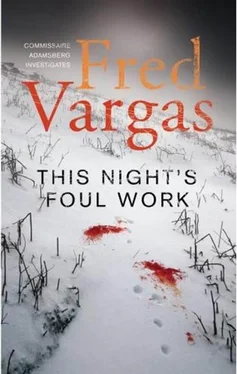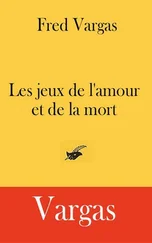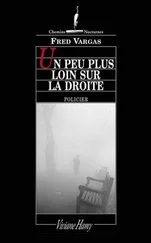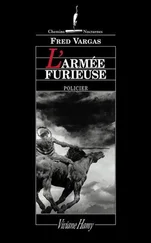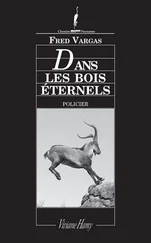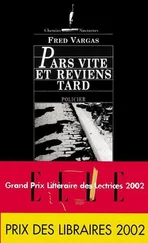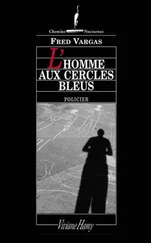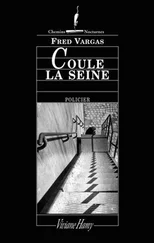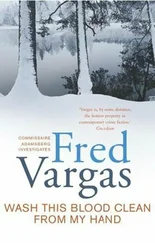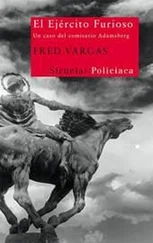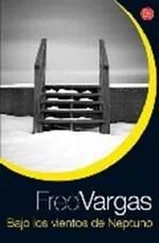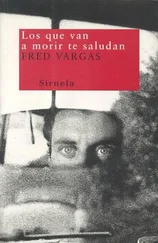‘Footprints?’
‘You’re going to like this,’ said Lamarre, with the smile of a child who has been hiding a present behind his back to increase the surprise. ‘The angle of the corridor wasn’t easy to negotiate, so she had to lean hard on the trolley and pivot on her feet – see what I mean?’
‘Yes.’
‘And the concrete floor is rough there.’
‘Yes?’
‘And just there we found traces…’
‘Of navy shoe polish,’ said Adamsberg.
‘You’ve got it.’
‘Isolated from the ground on which her crimes are committed,’ said the commissaire slowly, ‘but still leaving traces behind. Nobody can really be a Shade. We’ll get her through these blue marks.’
‘There aren’t any full prints anywhere, so we can’t be sure about the size. but it looks as if they were women’s shoes, flat-heeled and solid.’
‘Now the cupboard,’ said Justin. ‘That’s where she injected the dose of Novaxon, before shutting the door on its hook.’
‘Nothing of significance in the cupboard?’
A short silence punctuated Justin’s report.
‘Yes,’ he said. ‘The syringe.’
‘You can’t be serious, lieutenant! She surely didn’t leave her syringe behind?’
‘Yes, absolutely. On the floor. Wiped completely clean, of course – no prints.’
‘So now she’s signing her work,’ said Adamsberg, getting to his feet as if the nurse was openly challenging him.
‘That’s what we thought too.’
The commissaire paced around for a few moments on the grass, his hand behind his back.
‘Right,’ he said. ‘She’s crossed some kind of threshhold. She thinks she’s invincible, and she’s telling us so.’
‘Seems logical,’ said Kernorkian, ‘for someone who wants a recipe for eternal life.’
‘But she still hasn’t laid hands on the third virgin,’ said Adamsberg.
Estalère did his round of the officers, pouring coffee into the plastic cups they held out. The makeshift picnic site and the absence of milk made it impossible for him to conduct his usual complicated ceremony.
‘She’ll get there before we do,’ said Mordent.
‘Don’t be too sure,’ said Adamsberg.
He returned to the circle of officers and sat down cross-legged in the centre.
‘The quick of virgins,’ he said, ‘didn’t just mean the dead women’s hair.’
‘But Roman settled that for us,’ said Mordent. ‘We know this maniac cut off some locks of hair.’
‘If she cut off some locks of hair, it was in order to gain access.’
‘To what?’
‘To the real hair of death. To the hair that goes on growing after death.’
‘Oh, of course!’ exclaimed Danglard ruefully. ‘The quick. The part that keeps on living – and growing – even after death.’
‘That’s the reason,’ Adamsberg went on, ‘why it was essential for the nurse to come back and dig up her victims a few months later. The quick needed time to grow. And that’s what she was after, the two or three centimetres of hair growing out from the root, in the grave. It was more than a symbol of eternal life. It was a concrete example of vital resistance, life refusing to stop after death.’
‘Ugh, sickening,’ said Noël, summing up the general reaction.
Froissy packed up the food, which no longer tempted anyone.
‘But how will that help us identify the third virgin?’ she asked.
‘Now that we understand that, Froissy, the rest will follow logically: it has to be crushed with the “living cross in the heart of the eternal branches,” adjacent in equal quantity.’
‘We’d already settled that,’ said Mordent. ‘It must mean wood from the Holy Cross.’
‘No,’ said Adamsberg. ‘That doesn’t fit. Like the rest, the text has to be read absolutely literally, word for word. Christ’s cross can’t live in the heart of anything, it doesn’t make sense.’
Danglard, sitting sideways on his tyre, screwed up his eyes, on alert.
‘The recipe says,’ Adamsberg went on, ‘that it’s a living cross.’
‘That’s just what doesn’t make sense,’ commented Mordent.
‘A cross, living inside a body that represents eternity,’ said Adamsberg slowly, pronouncing every word clearly. ‘A body related to eternal branches.’
‘In the Middle Ages,’ said Danglard, ‘the creature that signified eternity was the stag.’
Adamsberg, who up to this point hadn’t been entirely sure of his ground, smiled across at his deputy.
‘Why was that, capitaine?’
‘Because the stag’s antlers reach up to heaven. Because the antlers die and fall, then grow again every year, like the leaves of trees, with an extra point, getting more powerful, year by year. It’s an amazing phenomenon, to do with the beast’s vital force. It was once considered a symbolic representation of eternal life, always beginning again, and always growing larger, like the antlers. Sometimes one finds representation of stags with Christ on their heads, or a cross between the antlers.’
‘The stag’s antlers grow out of its skull,’ said Adamsberg. ‘Like hair.’
The commissaire ran his hand over the spring grass.
‘The eternal branches could be a metaphor for the stag’s antlers.’
‘Do they have to be in the mixture, then?’
‘No, because we need a cross. And every word in the recipe counts, like I said. The cross that lives in the heart of the eternal branches . So the cross must be inside the stag. It must be a bone, like the antlers, and incorruptible.’
‘Perhaps the bone at the base of the antlers, where it makes an angle,’ said Voisenet.
‘It doesn’t look to me as if deer’s antlers make a cross,’ said Froissy.
‘No, no,’ said Adamsberg. ‘I think the cross is somewhere else. I think it’s a secret bone that you have to know about, like the cat’s. The penile bone represents the male principle. We need something of the kind in the stag. A bone in the shape of a cross, that would represent the stag’s links with eternity, but hidden inside its body. A living bone.’
Adamsberg looked round at his colleagues, waiting for a response.
‘I don’t see it,’ said Voisenet.
‘Well, I think,’ Adamsberg went on, ‘that we’ll find this bone in the heart of a stag. The heart is the symbol of life, it beats. A cross that lives, a cross inside the heart of the stag with eternal antlers.’
Voisenet turned to Adamsberg.
‘It sounds good, commissaire,’ he said. ‘The only problem is that there isn’t a bone in the heart of a stag. Or in anyone else’s heart. Not in the shape of a cross or anything else.’
‘Well, Voisenet, there has to be something like that.’
‘Why?’
‘Because in the forest of Brétilly, and then again in the forest near Opportune, two male stags were slaughtered last month and left lying on the ground. The only thing that had been done to them was that their hearts had been cut out. These killings were carried out by the same person. They were in the same place, that is within the zone of the saint’s influence, and they were killed near the two women who were sacrificed. They must have been shot by our angel of death.’
‘That makes sense,’ said Lamarre.
‘The stags were cut open after death in a particular place. Exactly like what happened to the cat, Narcissus. They were operated on in some sense. With a definite aim, to get something out. What? The living cross in the heart. So it must be inside the stag’s heart, in some form.’
‘That’s impossible,’ said Danglard, shaking his head. ‘We’d know about it.’
‘We didn’t know about the cat, or the pig’s snout,’ said Kernorkian.
Читать дальше
